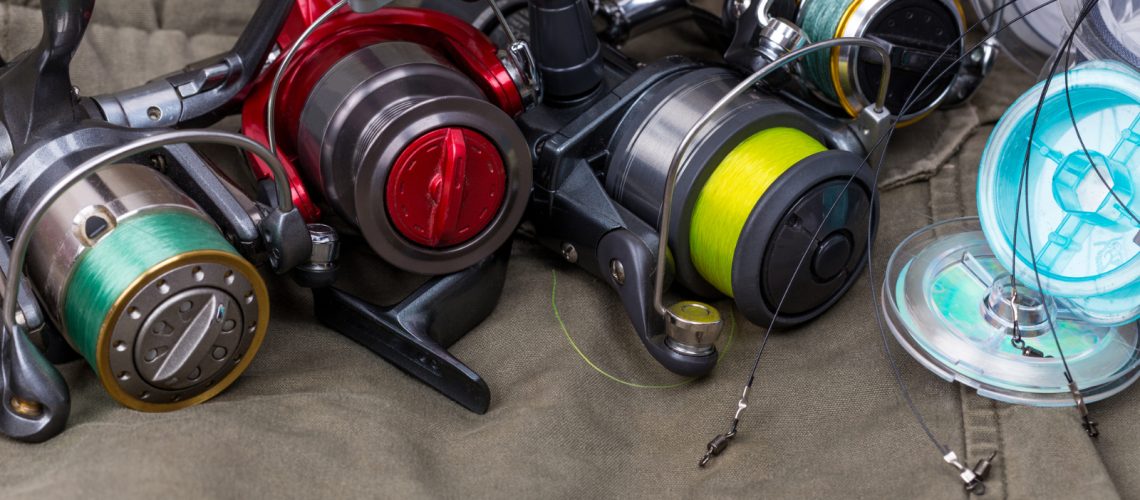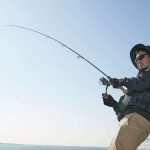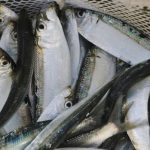Taking an interest in fishing? Or maybe you’re a seasoned veteran on the water. Either way, buying new fishing lines can raise more questions than solutions. It can all be confusing with different types of material, weight, and classification. Here’s everything you need to know before you reel in your next catch.
Types of fishing line
While many commonly know Monofilament and Microfilament lines as primary line types, there are five types of lines for different purposes. Factors like what fish you’re aiming for, underwater conditions, and bait usage all factor in the perfect line choice. While most lines are compatible in some form or another, having the proper setup can significantly increase your chances of landing the fish. The main types include:
Monofilament
Commonly referred to as “Mono,” it is a single strand line mainly consisting of nylon with a subsequent stretching property. It has been the main type of line for the past 70 years. While reliable, it is heavier than other line types.
Pros
- Common and cheap, it can generally be found in any outdoor or superstore at highly reasonable prices.
- Its stretching capability absorbs most of the shock from the fish, distributing it across the line rather than the rod itself.
- It has more robust durability than braid and can withstand a few encounters with rocks and teeth before snapping.
Cons
- It is generally thicker and heavier than other lines of the same weight class. Its thickness prevents you from spooling a large amount on, and unless you’re casting heavy weights, you’ll only be limited to less than 100 yards.
Microfilament
With “Braid” being the common name to refer to this line, it is composed of multiple polyethylene microfibers stranded into one line. Its lightweight properties allow you to cast farther than other lines.
Pros
- Lightweight; with its pulling strength and durability, its lightweight properties allow highly accurate casting far greater distances than casting with monofilament.
- The microfilament line is also the thinnest of the lines allowing it to be used in almost any reel and granting the ability to add more lines than conventional mono. Some ‘Baitcaster’ reels for freshwater only operate correctly with the use of braid because of this advantage.
- Tightens when soaked. Underwater, the braided line soaks in the water keeping the line tight with tension. This can add more resistance to your line and make the reeling action much smoother.
- (Bonus) Tightened braid allows you to add more line onto your reel, so remember to wet when spooling.
Cons
- Extremely prone to breaking when coming across any hard surfaces or structures.
Fluorocarbon
A Lesser common type of line, commonly compared to monofilament. However, it comprises a polyvinylidene difluoride composite (PVDF). While similar in appearance, it is far stiffer, lacking mono’s stretching quality, and is generally more expensive.
Pros
- A fully transparent line that’s far stiffer than filament, and if used as a leader, it can pull most fish away from pilings or underwater structures without breaking.
- Its material grants abrasion resistance, extending the line’s lifespan.
Cons
- Roughly 50% more expensive than mono prices.
- Being stiff makes the line far thicker, preventing it from being used to spool the reel a reasonable amount.
Single Purpose
Fly Fishing Line
“Fly line,” as it is referred to, is somewhat of a combination between Monofilament and Braid because it uses the same properties and outer lining as microfilament but prioritizes a nylon core for casting ability with the fly fishing technique.
Fly Line is usually only used for fly reels as the nylon core gives it weight for casting distance, but the braided outside allows the back and forth motion to launch the line in a fluid motion.
Wire
One of the least common types of line as its niche-specific use is only for more sizable saltwater fish. The braided steel wire is usually made of stainless steel or a combination of metal alloys and utilizes a clear plastic coating to prevent wear. For most anglers, this line is strictly used as a ‘leader line” to prevent larger fish with sharp teeth from biting through.
Wire’s sole use is to create a solid line end to prevent large saltwater fish like tuna, wahoo, or sharks from biting through. It can be used to spool a rod normally, but having the end in a leader gives that extra security in landing the fish without breaking off.
Fishing Conditions and Leaders
Most anglers use leader lines as a differential way to utilize each line’s advantages and avoid the main line’s weaknesses. It considers all the elements of your fishing location and goal, allowing you to achieve the best results without changing all your line. For example, if the fish you’re targeting live near understructure or dock pilings, then a mono or fluorocarbon leader allows the rest of your line to absorb the shock. This is especially important in preventing the fish from cutting you off on a jagged surface. With three different fishing environments, various leader combinations can be made, but here are the main ones you need to focus on.
Freshwater
Freshwater lakes, ponds, and rivers can all feature great fish in unique places. With most locations, however, the main two things you can worry about are underwater pilings and your nearby surroundings. With braid being more common in the freshwater fishing community, it allows for more precise casts to avoid trees and the initial pulling strength to hook the fish. But to mind the structures, you can use around two feet of ‘Mono’ or ‘Fluoro’ line to have less wear and last a more reasonable amount of time. Having a stronger, thicker leader also helps with landing the initial bite on bigger freshwater fish such as Catfish and Carp.
Beach/Inshore
Coastal fishing with mainly sandy or muddy bottom leaves fewer worries about the influence of the surroundings. Casting from the beach usually allows you to cast far so braided lines can be used. However, with a heavy enough weight, monofilament can achieve similar casting results. Like freshwater fishing, a beach with rocks and coral, or a structure, tying on a heavier Mono or Fluoro leader can allow you to prevent most snagged situations.
Blue Water
With only two main forms of deepwater fishing, each one has its conventional setup. Firstly trolling, where you drag a moving bait behind the boat, puts a heavy amount of stress on the line forcing you to use larger reels. This extra capacity leaves room to use a strong monofilament main line to land large, fast-moving fish. Since most of the time, you can catch predatory fish while trolling your bait, using a steel leader helps keep everything intact. The other type, jigging, is a fishing process where the boat stays still, and you drop baits as deep as you can. A heavy braid can be used for most lines, allowing you to drop even deeper if permitted. However, since deepwater fish can have sharp teeth or be protected by structure, fluoro and wire leaders are often your best bet.
Whether fishing off a dock or trolling for tuna miles offshore, every fisherman has preferences in what they choose to rig with. But from generations of fishing, these are the more common and conventional uses. You only know what can happen once you’re out there.





